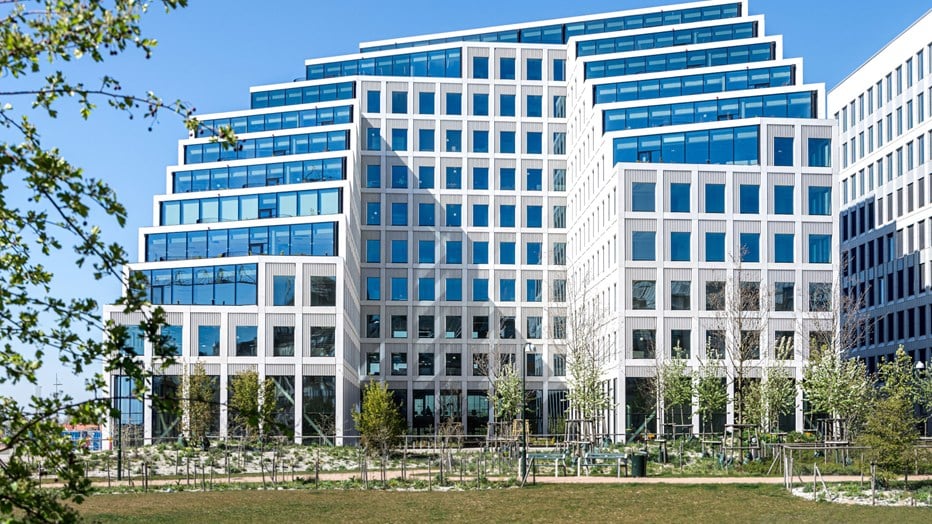Collaboration the key to success for Hyllie Terrass
It started with more questions than answers, but also a conviction that the solutions were just down the road. Skanska's cutting-edge sustainability project is the result of detective work and collaborations that are now making waves.
Hyllie Terrass in Malmö, is one of Sweden's most sustainable office buildings. The result of truly great collaborations within Skanska and with partners, it’s built to reduce its lifetime climate and environmental impact. Already in 2016 when the Hyllie Terrass project in Malmö first began, Skanska had big ambitions. In addition to its futuristic architecture and inviting green terraces, the aim was to make the building's climate footprint as small as possible. Hyllie Terrass also became a pilot project for the Sweden Green Building Council’s newly established ZeroCO2 certification system.
"We knew what we wanted to achieve but we were a long way from knowing how we would get there. The only thing that was certain was that we needed to find new work methods and collaborate with others if we were to reach the certification’s high requirements,” says Stefan Andersson, Project Development Manager, Skanska Commercial Development, Malmö.
Impacting the whole industry
The project team began by listing the top twenty items in terms of climate impact. This was followed by patient detective work to find the most sustainable suppliers and materials on the market.
“We have turned over every stone. Searched for the most sustainable materials and found new ways to recycle. We have collaborated with passionate people who want to get ahead in their sustainability efforts and expanded the organization with the right knowledge.”
The work also included requiring suppliers and subcontractors to report their climate footprint.
“To be able to take on our assignment, they had to ask themselves the question ‘how sustainable are our products really?’, and in turn ask their suppliers the same question. This way, our work has had a ripple effect and influenced the industry in several ways.”
Smart solutions for renewable energy
One of the most important collaborations in the Hyllie Terrass project is between Skanska and E.ON, who have developed a joint energy solution – E.ON Next. The twelve-story office building will be supplied with 100 percent renewable energy. There are solar panels on the roof connected to a battery storage. The building is also connected to a smart grid and may share energy with its neighbors.
“The ZeroCO2 certification is tough, and that's precisely why collaborations with others have been absolutely crucial. Everyone involved has had to test new things for us to reduce climate impact at every step,” says Stefan Andersson.
“This is just the beginning”
In June, it will be moving-in time for the new tenants who want to "make a big impression, but leave a small footprint". The building are to be certified for LEED, WELL and ZeroCO2, which have been achieved through a range of measures. From climate improved concrete and recycled reinforcements in the building’s frame to using biochar in the green terraces and producing furniture from construction waste in collaboration with Swedese and designer Louise Hederström.
“We are incredibly proud of the work we have done with Hyllie Terrass, but this is just the beginning. We have shown that it’s possible. Now it is the time for others to scale up good solutions and for us to continue challenging ourselves in the next project. Not least in order to reach Skanska's goal of halving carbon dioxide emissions by 2030,” concludes Stefan Andersson.








